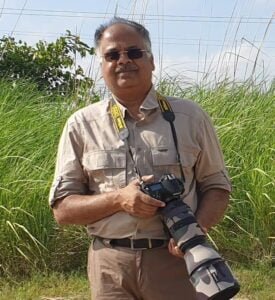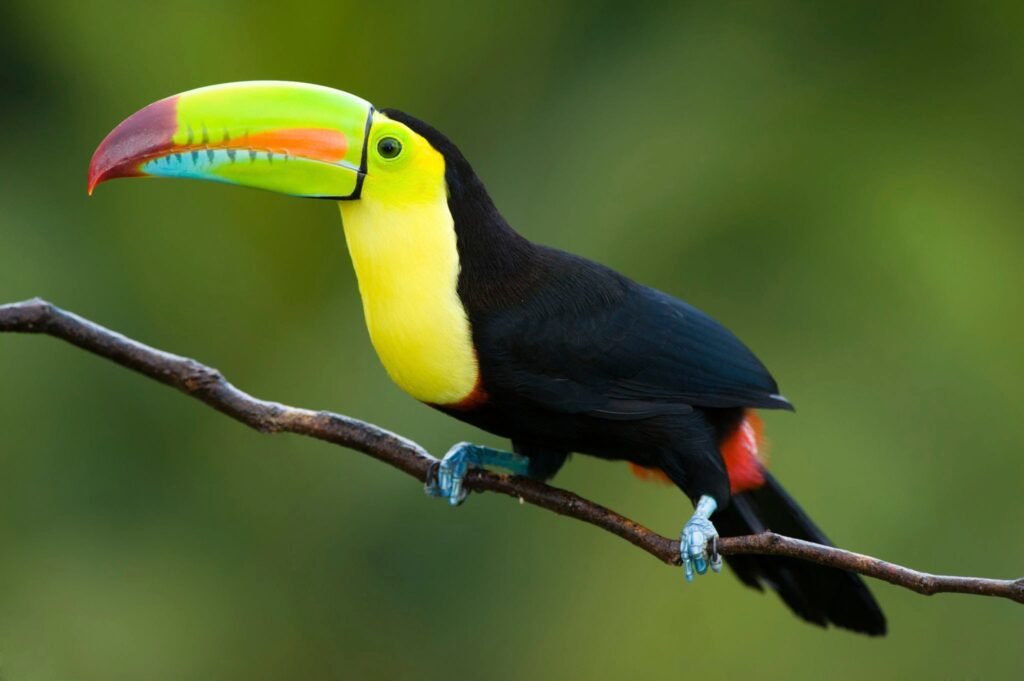Commonly known as Bird watching, Birding is fast becoming a passion of many in India. As a new enthusiast I too have taken it up as a hobby. Its not just a keep busy venture for my retired life but is something that enables me to enjoy the beauty of nature as a whole and gives me adventure, a challenge and a contributor in conservation of the ecosystem. While enjoying the serene solitude, the freedom in nature one sees the colors and variety of plants and animals (and birds of course). The challenge comes when you want to capture the beauty in your camera and the birds don’t give you enough time to aim, focus and click; and then there are so many around that you get the FOMO. Over a period, you understand how nature works, how one living being must eat the other to survive. Then you know that just because you are the most powerful being on the earth, it is not for you to interfere; it is only that you need to conserve and not destroy what the almighty has created.
I have spent a lot of time learning the ways of the birds, how to research where to find which bird and then how to go about capturing them in my camera. I have also had to learn photography because I, as would everyone, want a clear crisp image so that I can get all the splendid colors in my picture. I am still on my way to achieve my aim there. In the complete outdoors, even if it is just outside my colony, it is like the wilderness when it comes to clicking birds. A visit to a bird sanctuary gives a better opportunity where the birds are in their habitat, there is a large variety in one location and they are comparatively comfortable with humans around.
So, I took a trip to the Keoladeo bird sanctuary in Bharatpur in the migratory season.
Apart from the ones I had seen several times there was this one that I had heard about. Its an elusive one not easily seen; the Indian Nightjar. Just to clarify, it may be a night bird, but it has to sit somewhere in the day 😊
Kingfisher is a well-known bird, but the interesting part is that there are several varieties. I found three in Keoladeo.
The white breasted kingfisher. It has a beautiful blue on its back and a white apron like chest. It is quite common in NCR too.
Then there is this cute little Common kingfisher not easy to spot (wonder why it is called common!)
This Pied Kingfisher which I wanted to see there but there seemed to be only a few and two of them were flying far away. My guide did point them out, but I couldn’t get a closer look. I had to travel 3 kms to the other side of the waterbody to get a shot from 100 feet (closest I could get).
While travelling to the other side of the waterbody along the ‘ring’ road, i and the rickshaw puller – com- guide were the only two in visible range. We suddenly saw this huge Python on a turn, under a bush. It must have been more that 15 feet and about a foot in diameter!! It was probably slithering towards the sunny side of the road to bask and it saw us (probably first, because it had stopped hoping that we would pass by). We got down from the rickshaw (not a smart move in hindsight) and tried to go to its other side to get a picture of its full length. It quickly slithered away showing that it had its belly swollen with a latest animal or bird it had eaten (phew). I could get only these shots.
There’s this bird you must have heard often shrieking away in open areas; te – te – teu, te – te – teu, te – te – teu. We commonly call it a ‘Titehery’ in Hindi. A long-legged beauty with a black on the head and black apron – like on the chest, brown on top and red goggles like between its eyes. It’s the Red Wattled Lapwing. Fiercely territorial, it nests on the ground in tufts of grass and will shriek, bomb -dive and defend its area or nest incessantly.
A very melodious musical whistle like singing bird is this one. A male that often sings in various ways in its mating season. This small bird is also found in gardens and backyards of a large part of India. The Oriental Magpie Robin.
Another small dark colored bird of grass lands and bush lands is this Pied Bushchat. This little fellow was not at all scared and was hopping around on the path in front of our rickshaw. I got down, knelt beside it and it sat there posing for me. Then flew to the lowest nearest branch of a bush and sat on the top to pose again, eagerly waiting till I took all my shots.
The Munia, Indian Silver bill. Cutie -pie. A small flock suddenly flew in and alighted on a bush near my rickshaw. We had to screech stop (the rick mind you 😊) you can see why its called the Silver bill.
There are several types of Herons near our wetlands. We commonly call pond herons as ‘bagula’ in Hindi. In fact even cattle egrets are called by the same name. The pond heron is usually well camouflaged in the grass. But when it flies it has whit under -wings. One early morning, I was sitting on the edge of a water body where the Snake bird and Cormorants were coming to feed. This friend here was statue on a small stone not 4 feet from me, waiting for its prey. While the others were swimming and diving around trying to catch a fish this fellow caught two in a matter of 5 mins and gulped them down. The Pond Heron.
Then there are the beautiful tall Gray heron and Purple heron. They are pretty large in size and catch pretty large fish. You may see them eating even ducklings and snakes at times, gulping them down whole.
Gray heron
Purple heron
So there I sat, waiting for the Snake bird, The Darter, to catch a fish so that I can get a few action shots of it throwing its prey in the air while swimming and then letting it slide down its throat with panache. It is called the snake bird because when it swims its head and neck only are visible over the water and that looks like a snake with its head stretched out in the air.
Another bird that swims, dives under and swims underwater to catch fish is the Cormorant. Again there are a variety of them but les stick to one common name for the present. It has a shorter neck that the darter, no white shiny marks of the top of the wings and a curved beak.
The Spot Billed Duck is a beautifully patterned duck with a yellow spot on the tip of its bill. This family hare was enjoying a wade through leisurely. I was told there was a couple around that had 11 ducklings !!
Then there’s this beautifully patterned Northern Pin tailed Duck. There were a huge number of them there. Maybe several flocks in different parts of the massive sanctuary which may total to several hundreds. The white streak pointing upwards on its neck is a good identification mark, along with the color size etc. And as usual it’s the male that is the beautiful one.
Another good looker is what is called the ‘Golden Duck’ as told by my guide. This is the Rudy Shelduck. ‘Gora gora mukhda, sone jaisa tan.’ There was a pair a little away from the road which was a great attraction for the visitors there.
Let us see some larger birds.
The Painted Stork is a favorite one. They are plenty in the region south of Himalayas and are residents in India. They are really large birds that live in large flocks. They nest high in trees near waterbodies. With long legs, standing on top of the trees it looks a bit incongruous to me; seems that they would be unstable and fall.
Another large white bird, commonly difficult to distinguish from other large white birds ( like egrets) in the wetlands is the Spoonbill. You can see why it is called so. They also live in flocks but here there was this individual on a solo trip, enjoying his solitude and peace.
There is this Ibis, a medium sized wader in wetlands with a curved beak. This one individual the Black Headed Ibis, had a pet spot. Next to the road, jutting out horizontally into the water was this dried stump. This fellow stood on it the whole day I think. I was at the sanctuary for three days and whenever I passed by that spot, I found him there.
The other Ibis seen there was the Glossy Ibis. It is reddish brown in color with bottle green wings. it also has a curved beak which is a good identifying character of the ibis; apart from its size and color. Mind you there are other birds with curved beaks. But we will not discuss so much.
A big hunter, a big bird of prey the Steppe eagle was a great sighting there. It sat on the top of a tree a distance away from the road. (There are designated paths and roads in the sanctuary that one can traverse through. The rest is water bodies, and none is allowed to wade through or go into it except a paid boating trip conducted by the staff). Such raptors have a variety of ‘cuisines’ available to them here. Even ‘foreign’ flavors in the migratory species that come in the season.
I saw the little owlet that is so common in almost the entire country, the Spotted owlet. There were three pairs in three different locations.
A very impressive bird but elusive is the Dusky Eagle Owl. It is a pretty large owl with ear like tufts above the eyes. It sits like an eagle and in flight it is quite big too.
There are more than 300 species including migratory birds, that can be seen in the sanctuary during the winter season. The migratory birds are a wonder because they come to the same place at the same time every year flying nonstop for several days at times. They come in large flocks across continents navigating with their inbuilt senses. The Bar Headed Goose is known to fly at a height of about 33000 feet (level at which the international flights fly) where there is barely any oxygen, air is rarified, and the temperatures are in minus 30 deg Celsius. They fly over the Himalayas, practically over the Everest, for days, to come to such wetlands and breed. It is hard to imagine, but even sparrow size birds migrate several thousand kilometers, not just the big ones.
Nature is amazing as also so very important to human survival. Life on earth is what makes it livable for mankind. Birds are a wonder of this nature but are very fragile too. Destruction of their habitat as also that of animals, is not only threatening their survival it is also causing their ingression into human settlements like destruction of crops. It is our responsibility to maintain the balance in nature because we are capable of and causing the changes.
 By Anshalesh – Wild Life Enthuiast
By Anshalesh – Wild Life Enthuiast





